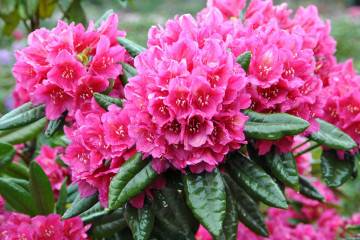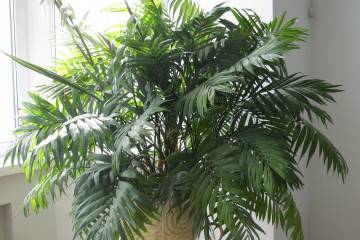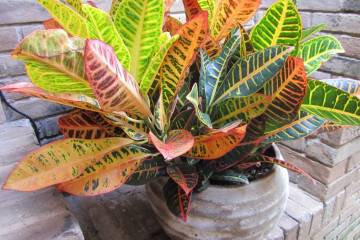Chlorosis of hydrangea paniculata or large-leaved - how to treat leaves
Content:
Chlorosis of hydrangea leaves is manifested brightly, so it is difficult not to see the problem. There are several reasons for its occurrence, which are easy to eliminate. Mostly, special preparations are used, but some products can be prepared on your own. But it is better to prevent the disease than to cure it. If you adhere to a few simple rules of care, then the plant will never get sick with chlorosis.
Hydrangea chlorosis
Hydrangea is a very beautiful garden plant, which is distinguished by the splendor of green leaves and lush flowering of buds. At the same time, the culture is unpretentious in care, but still there are incidents that lead to a deterioration in the appearance of the aboveground part.
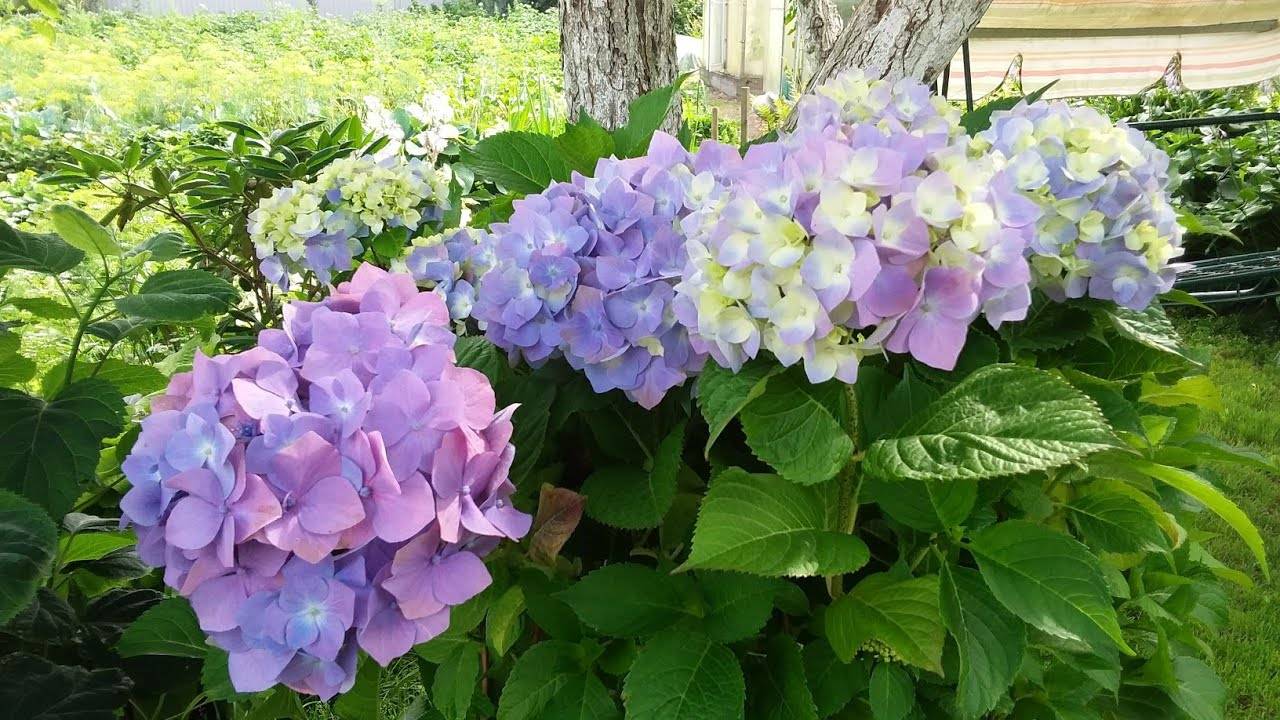 Healthy hydrangea in the garden
Healthy hydrangea in the garden
The most common is hydrangea chlorosis. The disease is easily eliminated and is considered too dangerous for the flower. But, if you do not take action, then the specimen will become inconspicuous, lost among the rest of the greenery of the garden and stop flowering.
By what signs to determine the presence of chlorosis in a plant, even inexperienced growers can understand:
- The leaf plate begins to brighten and approaches yellow in color.
- The veins remain the same color - bright green.
- The inflorescences begin to dry out and eventually die off completely.
 Manifestation of hydrangea chlorosis
Manifestation of hydrangea chlorosis
At the first signs of the disease, it is worth immediately taking measures to eliminate the problem. But first you need to determine the causes of the onset of the disease.
Causes of leaf blanching and the occurrence of chlorosis
Hydrangea is very fond of rich and fertile soil, which will provide an opportunity to develop strong stems and nourish huge inflorescences. If some element is missing, then metamorphoses begin to occur with the leaves of the flower.
But most often the leaves turn pale, and then chlorosis appears if there is not enough iron in the soil. It turns out that iron for hydrangeas is the main nutrient responsible for the pigmentation of leaves and buds, as well as metabolic control.
Additionally, the acidity of the soil (pH) should be in the range from 4.0 to 6.5 units. If the acid level drops, then the shoots become pale. The flowers turn completely white. If you combine these 2 problems, then chlorosis is definitely provided.
How to treat hydrangea leaf chlorosis
If chlorosis of hydrangea leaves has begun, treatment should be effective and gradual. Much depends on the method and the chosen means. Folk methods and "drugs" do not always win in the fight against the disease. But special drugs can definitely help and will do it quickly.
Unconventional method - rusty nails for chlorosis
Some gardeners like to use unconventional methods to treat many of their favorites. There is also an unusual treatment option for hydrangea chlorosis, which involves the use of rusty nails.
 Preparing a hole around the bush
Preparing a hole around the bush
How to cure a disease using rusty nails:
- Make a groove around the bush at a distance of 5-8 cm. The depth of the hole should be between 5 and 10 cm.
- Pre-select a lot of rusty nails of any size, size and degree of corrosion.
- Place metal elements in the groove and dig in with earth.
Another recipe involves soaking rusty nails in a bucket of water for several days. This water is then used to water the bushes. It is not recommended to use a special infusion more than 1 time a week.
When watering, the rust will become limp and fall into the soil, enriching it with iron. But this option is ineffective, since rust releases little iron, and the plant will not be able to assimilate such a variant of the element.
Chlorosis treatment with iron preparations
To accurately cure the plant, you need to use special preparations that contain iron. There are many options for medicinal compositions that are suitable specifically for hydrangeas. Hydrangea chlorosis treatment involves the same as described in the instructions attached to the special preparation.
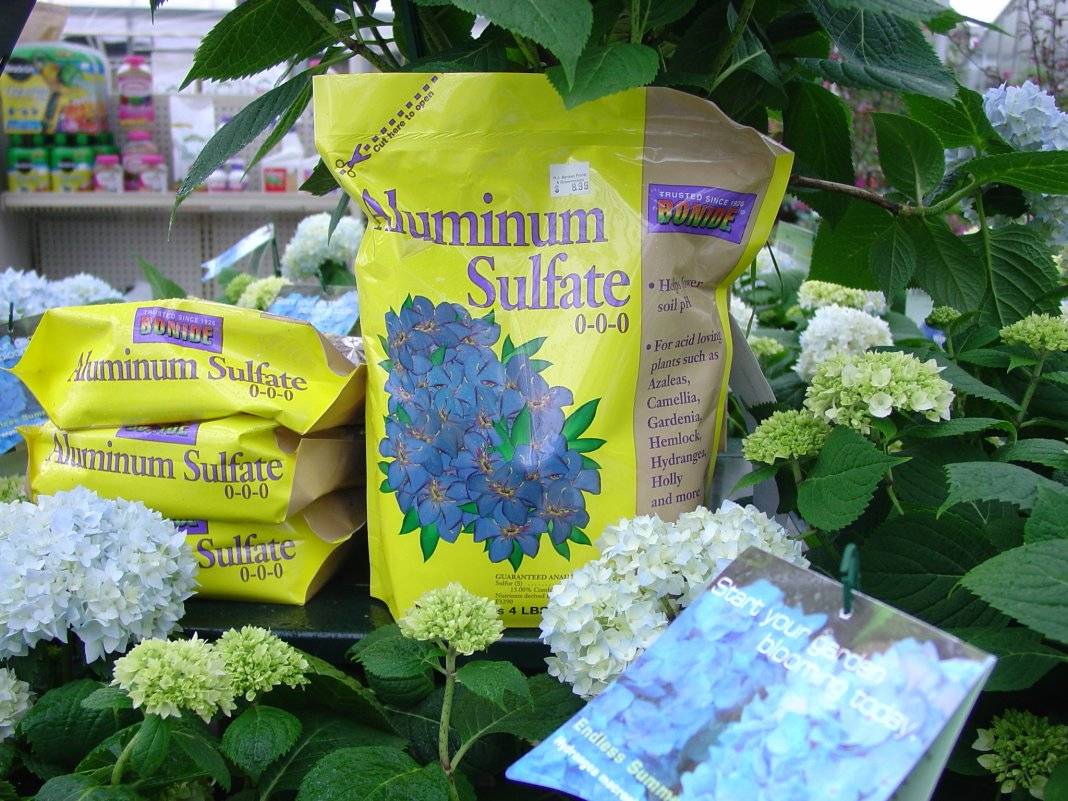 Option of a substance for feeding and treatment
Option of a substance for feeding and treatment
Some drug options:
- Iron chelate (Mikom-reaction);
- Antichlorosis (Master Color);
- Brexil-Fe (Valagro);
- Micro-Fe (Orton).
Plant chlorosis: prevention
In order not to treat the flower for chlorosis, it is better to prevent its appearance. This can be done thanks to preventive measures:
- Arrange full watering.
- Apply fertilizers on time.
- Choose topical dressings for each season.
- Shade the plant during the hottest period of the day.
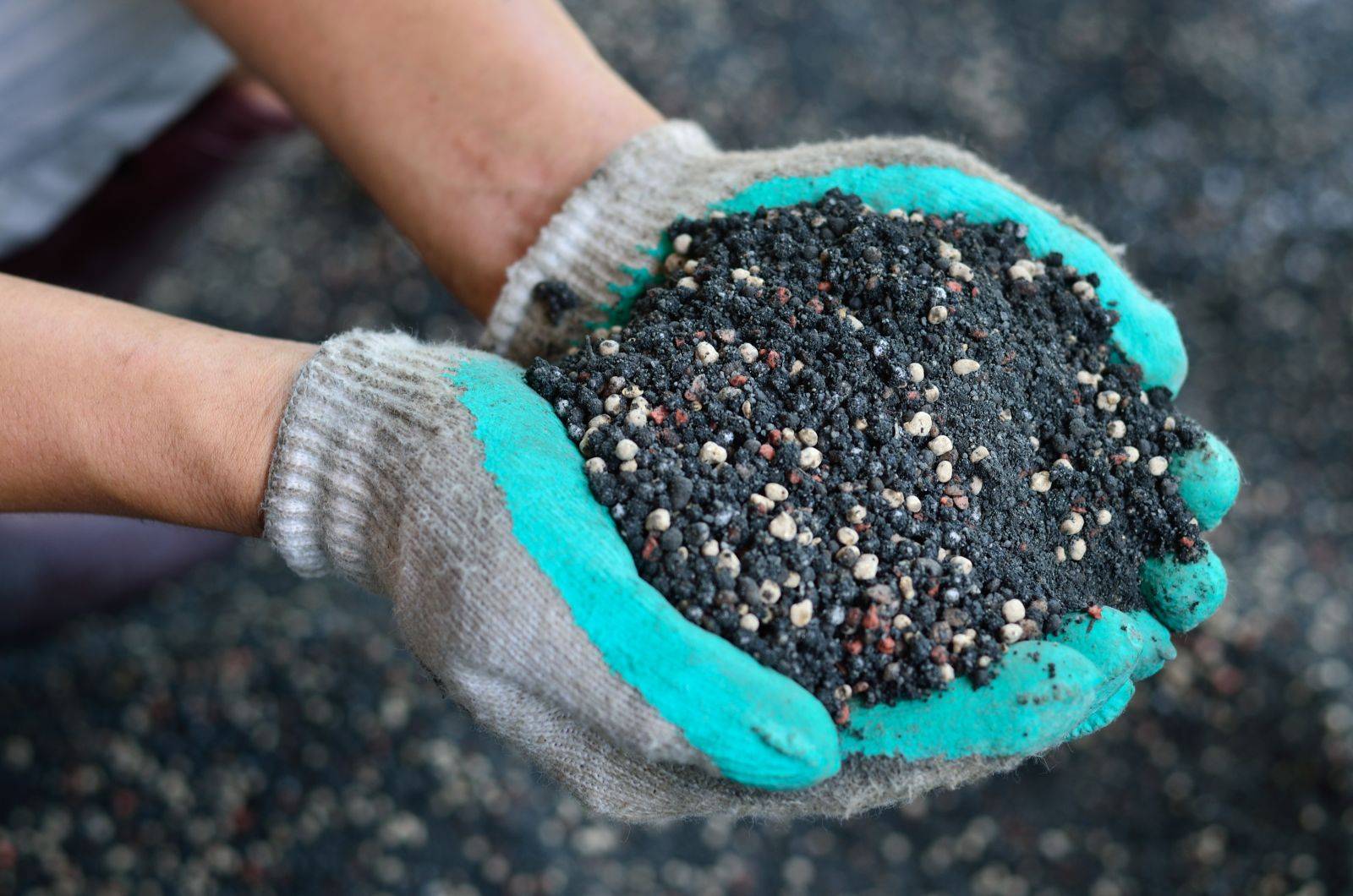 The right soil for the normal well-being of the plant
The right soil for the normal well-being of the plant
There are special products that are used to spray the aboveground part. This helps to save the flower from disease. To know exactly the condition of the soil, you need to carry out periodic tests that will show acidity. To do this, it is enough to purchase a kit with litmus paper and a special reagent.
Which plants are most susceptible to chlorosis
Even when buying a sprout or seedling, you should pay special attention to the state of the foliage of the specimen. You need to choose strong and large bushes for planting in the garden. But even this cannot guarantee 100% protection against disease.
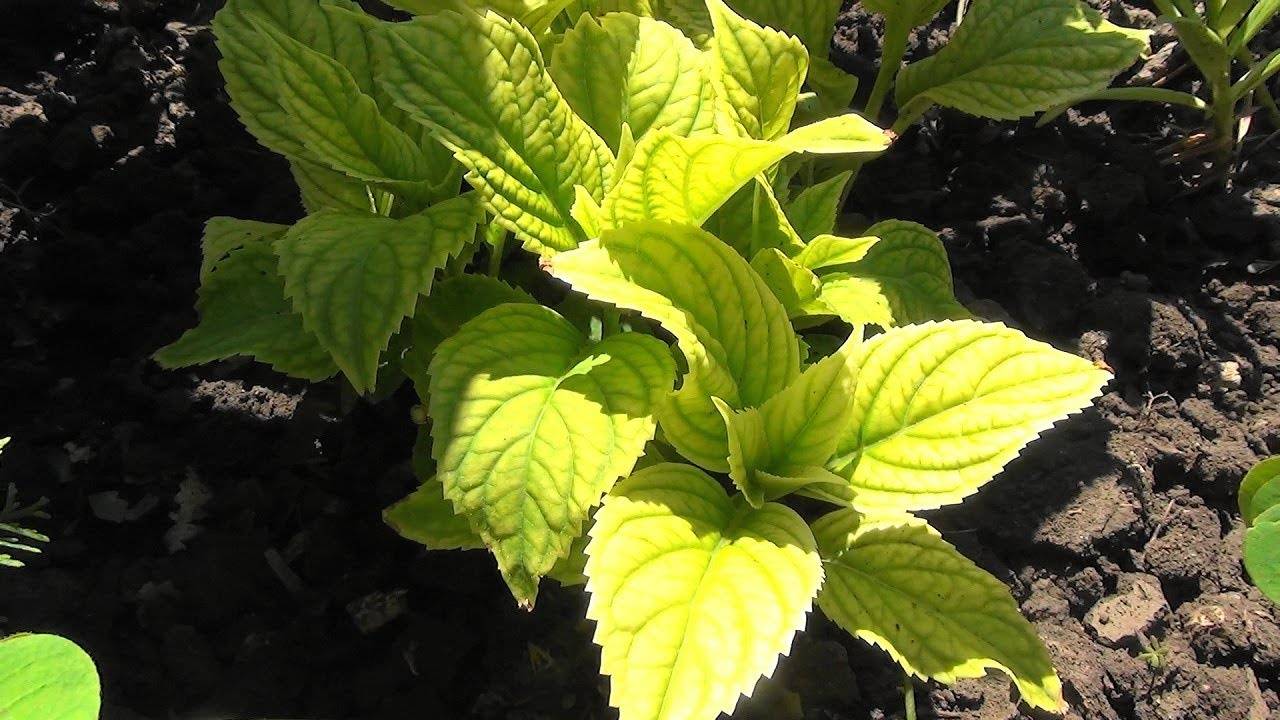 A healthy specimen fell ill with chlorosis
A healthy specimen fell ill with chlorosis
Certain varieties themselves attract this problem. Large-leaved hydrangeas often suffer from chlorosis. A huge area of leaf plates and inflorescences requires a special regime of fertilizers and dressing. The paniculate variety also often loses its green color. The aboveground part becomes pale and unremarkable.
How to use iron vitriol for hydrangea
Many gardeners save a plant with one simple, affordable solution. Salvation in many cases is iron vitriol for hydrangea, which will surely enrich the soil and stems with the necessary element.
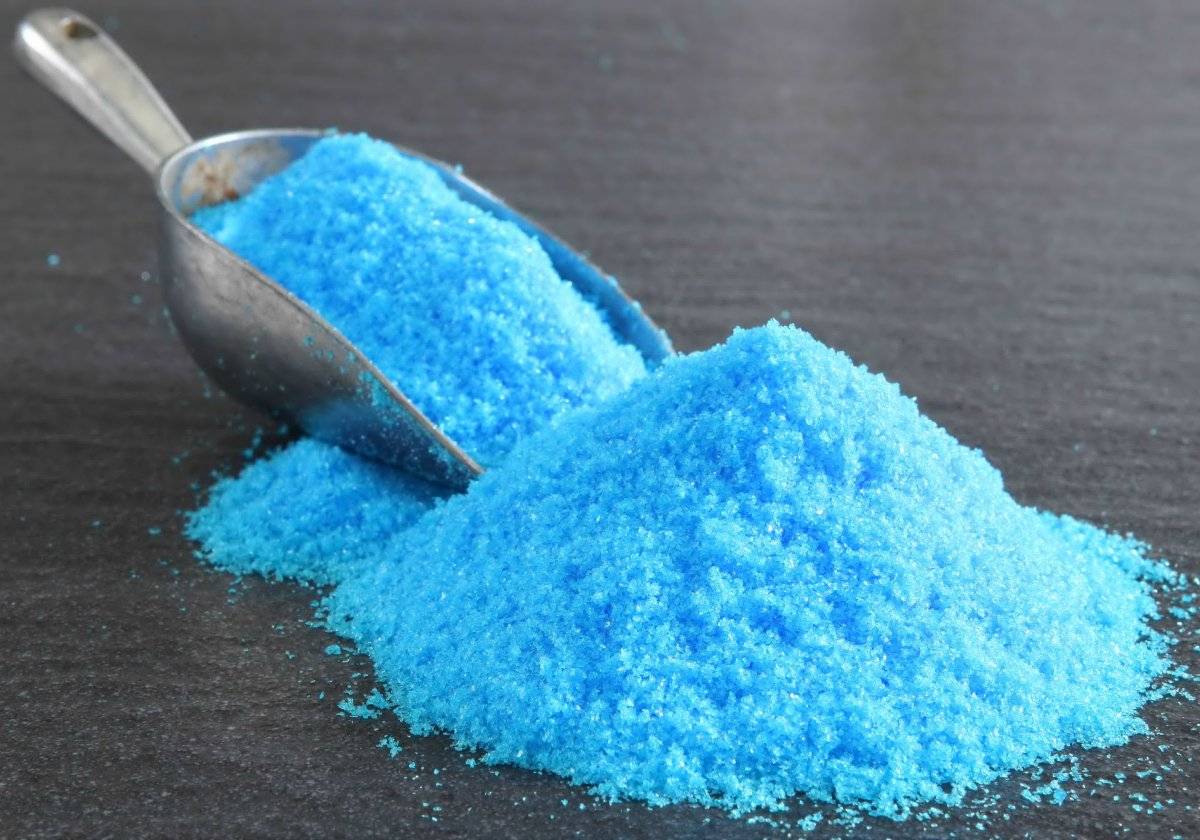 Copper sulfate is the main ingredient in medicinal solutions
Copper sulfate is the main ingredient in medicinal solutions
Several recipes on how to use iron vitriol for hydrangeas in the garden:
- Dissolve half a teaspoon of citric acid and 1/3 of a teaspoon of copper sulfate in 1 liter of room temperature water. The solution is used for watering and spraying.
- Dissolve a teaspoon of copper sulfate and a tablespoon of ascorbic acid in a liter of water. Apply a mixture for watering and spraying. You can add a few drops of lemon juice. But then it will be necessary to reduce the amount of ascorbic acid.
- You can add a few grams of the substance to the water each time you water. The leaves are sprayed with the same solution. It is undesirable to get a homemade preparation on the buds - the petals can dry out or burn out.
You can make other medicinal compositions based on copper sulfate. This is what will definitely cure the plant and become the ideal prevention of chlorosis.A gardener with any level of knowledge and experience will be able to prepare a healing "medicine" - the main thing is to adhere to the indicated proportions.
Hydrangea in the garden will delight with its appearance, if you take care of it correctly. In terms of care, it means timely feeding and fertilization of the soil and watering. If the problem has already arisen, then there are a lot of special and even folk remedies that will help to cope with the disease as soon as possible.
Video


